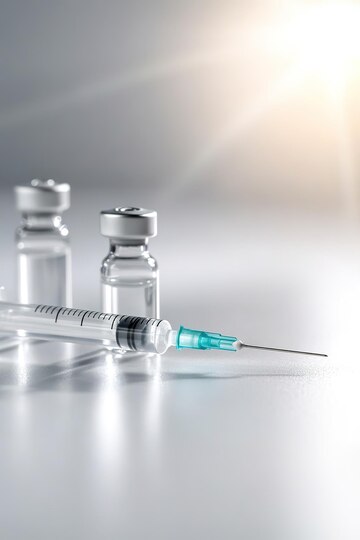Prema stručnjacima, je li sigurno i učinkovito punilo hrama: Je li sigurno i učinkovito?


Hramska punila su nehirurški kozmetički postupak koji se koristi za vraćanje izgubljenog volumena ili zaobljenosti. Kemikalije koje se mogu ubrizgavati uglavnom sastoje od hijaluronske kiseline (HA) i kalcijevog hidroksilapatita (CAHA), nude prolazno kozmetičko olakšanje popunjavanjem praznih područja s obje strane obrva.
Dr. Sarah Tonks od lijepih zagovornika klinike za ovaj postupak, primjećujući da je manje nametljiv od ostalih kirurških tretmana poput masnih grafta ili implantata. Ona, međutim, naglašava potrebu da se pristupi samo kvalificiranim liječnicima koji koriste proizvode odobrene od FDA kako bi osigurali sigurnije rezultate.
Punila hrama su kozmetički tretman koji se može ubrizgavati koji se vrši s namjerom vraćanja volumena na područje hrama, što je obično potonulo zbog starenja ili gubitka težine. Punila hrama prvenstveno su izrađena od hijaluronske kiseline i kolagena.
Hijaluronska kiselina (HA) Prirodno se javlja u ljudskoj koži i djeluje zadržavajući vodu na mjestu ubrizgavanja, povećavajući punoću. To je učinkovit materijal za punjenje zbog svojih prirodnih svojstava i visoke kompatibilnosti s fiziološkim tkivima.
Kolagen je još jedan protein koji se prirodno pojavljuje koji pruža strukturnu potporu u koži, ali se iscrpljuje s godinama, što rezultira nabora i probijanja. Injekcije kolagena mogu vratiti izgubljenu strukturu, što rezultira glatkijim izgledom.
Jednom kada se ubrizgavaju na određena mjesta, ove tvari potiču povećanje mekog tkiva, što pomaže u liječenju stanja poput asimetrije lica ili šupljine uzrokovanih kretanjem masnog jastuka tijekom vremena. Gubitak volumena obuhvaća ne samo stanjivanje, već i mijenja oblik i krivulje lica, dajući mu stariji izgled.
Dr. Sarwar Kaže "šupljina u hramovima može se učinkovito tretirati injekcijama punila dermalnog hrama, uz sekundarno poboljšanje položaja obrve."
Ubrizgavanje dermalnih punila u hramove daje licu okrugli, mladenački izgled dok ispunjava praznine proizvedene promjenom volumizirajućih struktura. Iako su učinci koji se vide na pojedince različiti, većina pojedinaca prijavljuje manje kozmetičkih problema nakon liječenja, što rezultira svježim ukupnim dojmovima.
Punila hrama neupitno su korisna za vraćanje izgubljenog volumena. Kako starimo, gubimo masne jastučiće i stječemo šupljinu u našim hramovima, dajući nam tanji, stariji izgled. Punila hrama ispunjavaju ove udubine, obnavljajući originalne oblike i pomažući u stvaranju mladenačkog izgleda.
Još jedna primjetna prednost punila hrama je obnavljanje simetrije lica popunjavanjem praznih područja, što poboljšava ukupni sklad između značajki. Nadalje, postupak čini da se lica čini mladenačkim zbog većih razina volumena. Napunjavanje ovih ključnih područja izravno se bori protiv starenja znakova kao što su prorjeđene strukture, što rezultira svjetlijim tećima i većim samopouzdanjem.
Tretmani vremenskog punila, za razliku od kirurških postupaka, nehirurški su i zahtijevaju kraće vrijeme oporavka. Pacijenti ga preferiraju zbog svog bržeg vremena preokreta i neposrednih vidljivih ishoda. Tretman čuva prirodno kretanje i ekspresiju kože, osim duljih vremena ozdravljenja povezanih s invazivnim postupcima.
Frileri hrama očito nude pojačanu kozmetičku privlačnost koja je prikladnija za individualne preferencije. Nadalje, ukupna tehnika je manje fizički zahtjevna od kirurških zahvata, a istovremeno nudi značajne koristi. Liječenje rezultira svježijom, mlađim kožom, što dovodi do većeg zadovoljstva podnositelja zahtjeva.
Postupak punjenja hrama uključuje ubrizgavanje punila mekog tkiva u određena područja za vraćanje volumena. Prije ubrizgavanja na kožu se nanosi aktualno sredstvo za poništavanje kako bi se osigurala udobnost pacijenta tijekom cijelog postupka. Stručni ubrizgači koriste tanku iglu ili kanilu za primjenu malih količina materijala postupno i opetovano dok se ne dobiju željeni rezultati.
Sjednica traje između 15 i 30 minuta, ovisno o uvjetima i preferencijama pojedinca. Period oporavka nakon injekcija obično je kratko, a većina ljudi se gotovo odmah vraća u svoje uobičajene navike. Na lokaciji se može dogoditi malo crvenila i oticanja, ali obično odlaze u roku od nekoliko sati od operacije. Poduzmite tipične mjere opreza, poput izbjegavanja vršenja pritiska na tretirano područje tijekom prvih 12-24 sati.
Nakon tretmana hramskog punila, hramovi će izgledati veće, redefinirajući crte lica i davati mladenački izgled. Rezultati su obično vidljivi odmah, s tim da su se najbolji rezultati pojavili dva tjedna kasnije, nakon što se ubrizgani materijal u potpunosti naseli. Mnogi su pacijenti izvijestili o većem estetskom zadovoljstvu, što sugerira njegovu učinkovitost kao liječenje protiv starenja.
Učinci traju od šest mjeseci do godine, ovisno o korištenom punilu, osobnoj metaboličkoj stopi i drugim čimbenicima. Redovni dodir jamči da su nastupi konstantni kroz vrijeme. Stoga, iako su privremene, takve kozmetičke terapije pružaju česte obnavljajuće izglede kada se koriste na odgovarajući način i pod profesionalnim nadzorom.
Medicinski stručnjaci i klinička istraživanja slažu se da su punila hrama općenito sigurna ako ih koriste obučeni profesionalci. Oni koriste robu odobrenu od FDA za provođenje postupka kako bi se dodatno povećala sigurnosni standardi. Nepovoljni učinci, poput modrica ili oteklina oko mjesta ubrizgavanja, mogu se u roku od nekoliko tjedana ukinuti, ali obično nestaju. Ozbiljne posljedice su neuobičajene, što naglašava koliko je važno provoditi tretmane pod vodstvom kvalificiranih stručnjaka.
Iako punila hrama nude privremeno rješenje za šuplje i gubitak volumena, postoje određeni nedostaci. Svi koji razmatraju postupak mora biti svjestan ovih mogućih nedostataka.
Svi koji razmišljaju o punilima hrama u Velikoj Britaniji trebali bi biti svjesni povezanih troškova. Na cijenu utječu preferencije pacijenata, troškovi praktičara i vrsta korištenog punila.
Punila hrama su sigurnija, manje bolna i glađa zahvaljujući Velikoj Britaniji Klinika za kožu Ultra-premium Juvederm Vycross formulacije i nagrađivane, ultra tanke japanske igle.
Prema EF Medispa, injekcije naprednih hijaluronskih kiselina za povećanje volumena lica obično koštaju između £ 400 i £ 700 Za svaku sesiju, a koristi traju od šest do dvanaest mjeseci.
Trošak tretmana na bazi kalcijevog hidroksilapatita (Radiesse) kreću se od 300 do preko 500 funti, a oni mogu izdržati do 18 mjeseci.
Broj potrebnih sesija određuje troškove ubrizgavanja poli-l-mliječne kiseline. Ovisno o pacijentovim reakcijskim obrascima, svaka terapija može koštati od 450 do 600 funti tijekom nekoliko tjedana.
Ovi se brojevi, međutim, samo namijenjeni korištenju kao procjena s loptom. Na stvarne stope značajno utječu normalne potrebe, posebne okolnosti i lokacija pružatelja usluga. Pacijenti koji žele znati precizne troškove moraju se prvo savjetovati s praktičarima koje su odabrali kako bi zajamčili potpuno razumijevanje.
Temple Fillers, neinvazivna kozmetička kirurgija koja dobiva na popularnosti u Velikoj Britaniji, pomažu u vraćanju volumena lica i simetriji rješavanjem znakova starenja poput šupljih hramova. Hijaluronska kiselina i kolagen često se koriste tvari za poboljšanje teksture i volumena kože.
Iako bi od ove metode trebalo postojati neposredne koristi, ključno je surađivati s iskusnim profesionalcima koji koriste predmete odobrene od FDA iz sigurnosnih razloga. Iako se općenito smatra bezopasnim, potencijalne nuspojave mogu se kretati od privremenog crvenila ili modrica nakon postupka do rijetkih, ali opasnih ishoda poput vaskularne okluzije.
Trošak terapije varira ovisno o vrstama korištenih punila, što je određeno individualnim potrebama. Čak i s tim rasponima, još uvijek je ključno imati izravne razgovore s nekoliko odabranih stručnjaka kako bi jamčili točnu jasnoću troškova prije nego što nastavite.
Kada su ga primijenili obučeni profesionalci koji koriste sastojke koji su odobreni od FDA, kliničke studije i stručne prosudbe općenito su pokazali da su punila hrama sigurna. Neke manje nuspojave, poput crvenila ili modrica u obrađenom području, mogu se pojaviti nakon postupka, ali one obično nestaju za nekoliko tjedana.
Vrsta kože i pojedinačne estetske postavke igraju glavnu ulogu u određivanju "najboljeg" punila hrama. Punila na bazi hijaluronske kiseline (HA), poput Juvederma ili Restylana, široko se koriste zbog svojih konzistentnih rezultata, iako kalcijev hidroksilapatit (Radiesse) proizvodi efekte koji su relativno duže. To također pomaže u proizvodnji prirodnog kolagena. Licencirane konzultacije dermatologa omogućuju da se najbolje osobno odabire na temelju jedinstvenih potreba svakog pacijenta.
Trajanje se prvenstveno određuje odabranom tipom. Hijaluronske kiseline (HA) imaju rok trajanja od šest do dvanaest mjeseci. Suprotno tome, Radysse pruža oko 18 mjeseci. Sintetička poli-l-lakta kiselina potiče sintezu kolagena i daje rezultate koji traju više od dvije godine, unatoč činjenici da zahtijeva mnoge tretmane.
Američka Uprava za hranu i lijekove (FDA) odobrila je niz marki dermalnih punila koje ispunjavaju veće sigurnosne standarde i uspostave referentne vrijednosti učinkovitosti, uključujući formulacije hijaluronata (Juvederm, Restylane, itd.), Kalcijev hidroksiapatit (CAHA-radiesse) i Poly- L mliječna kiselina (PLLA-SCULPTRA estetika).








Plus get the inside scoop on our latest content and updates in our monthly newsletter.